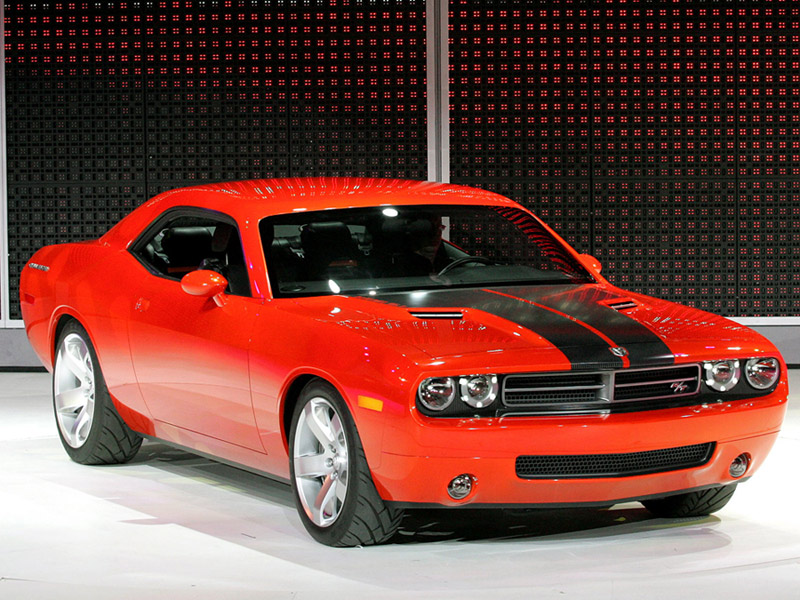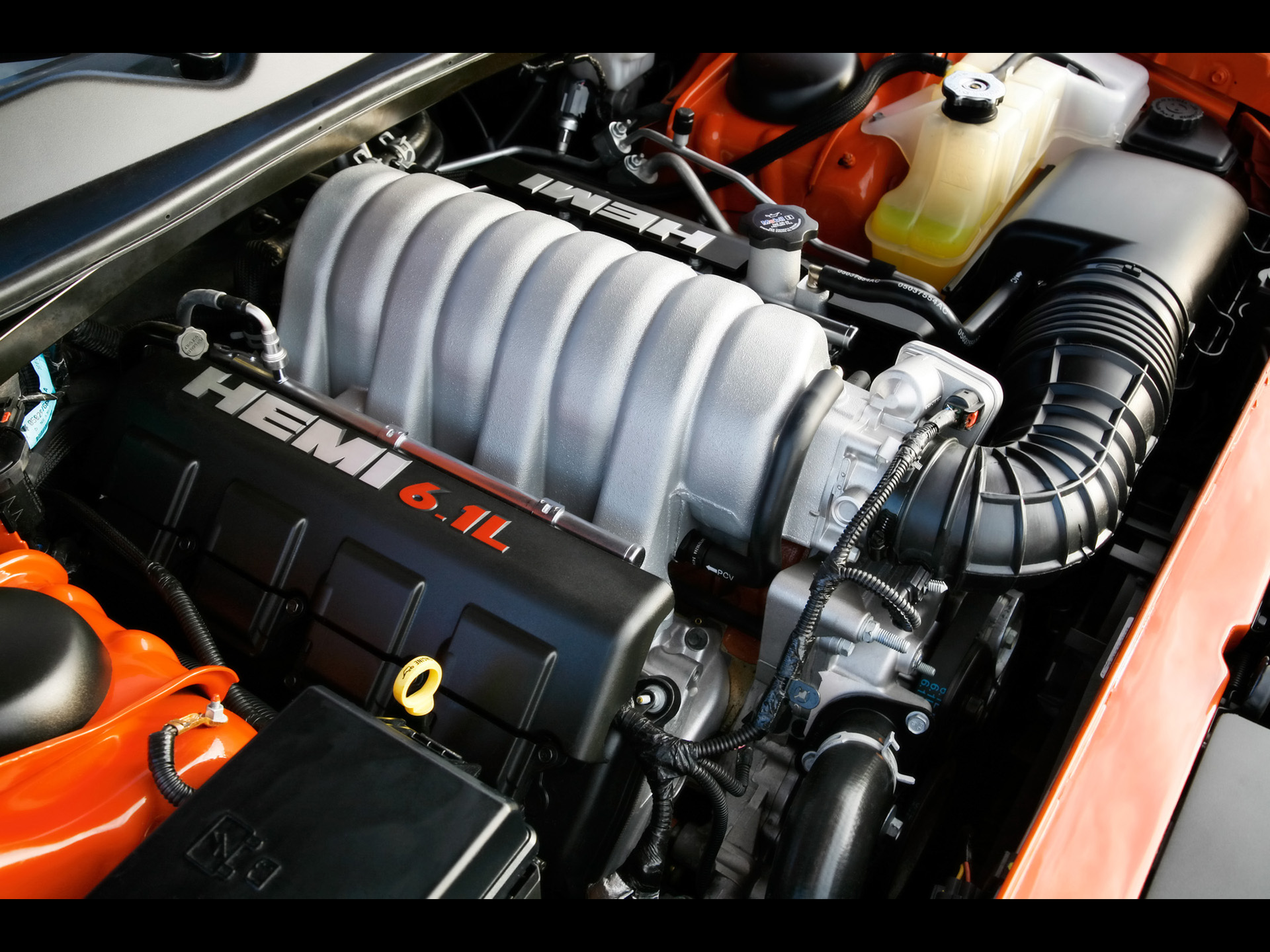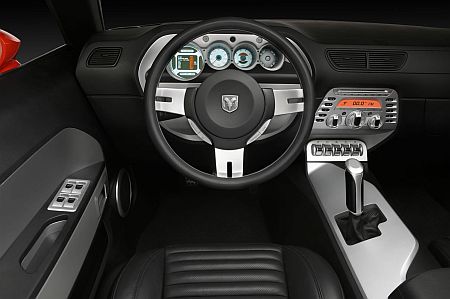
Dodge Challenger History The Challenger is described in a book about 1960s American cars as Dodge’s "answer to the Mustang and Camaro."It was one of two Chrysler E-body cars, the other being the slightly smaller Plymouth Barracuda. "Both the Challenger and Barracuda were available in a staggering number of trim and option levels" and were intended "to compete against cars like the Chevrolet Camaro and Ford Mustang, and to do it while offering virtually every engine in Chrysler's inventory."However they were "a rather late response to the ponycar wave the Ford Mustang had started."The author of a book about "Hemi"-powered muscle cars says that the Challenger was conceived in the late 1960s as Dodge’s equivalent of the Plymouth Barracuda, and that the Barracuda was designed to compete against the Mustang and Camaro. He adds that Chrysler intended the new Dodge as "the most potent ponycar ever," and positioned it "to compete against the Mercury Cougar and Pontiac Firebird."[4] Similarly, the author of a book about the Chrysler pony-cars notes that "[t]he Barracuda was intended to compete in the marketplace with the Mustang and Camaro/Firebird, while the Dodge was to be positioned against the Cougar" and other more luxury-type musclecars. The Challenger's longer wheelbase, larger dimensions and more luxurious interior were prompted by the launch of the 1967 Mercury Cougar, likewise a bigger, more luxurious and more expensive pony car aimed at affluent young American buyers. The wheelbase, at 110 inches (2,794 mm), was two inches longer than the Barracuda, and the Dodge differed substantially from the Plymouth in its outer sheetmetal, much as the Cougar differed from the shorter-wheelbase Ford Mustang. Exterior design was done by Carl Cameron, who also did the exterior for the 1966 Dodge Charger. Cameron based the 1970 Challenger grille off an older sketch of his 1966 Charger prototype that was to have a turbine engine. The Charger never got the turbine, but the Challenger got that car's grille. Although the Challenger was well-received by the public (with 76,935 produced for the 1970 model year), it was criticized by the press, and the pony car segment was already declining by the time the Challenger arrived. Sales fell dramatically after 1970, and Challenger production ceased midway through the 1974 model year. About 165,500 Challengers were sold over this model's lifespan. Today SE
2009 Dodge Challenger SE
The base model Challenger is powered by a 3.5 L (214 cu in)SOHC V6 producing 250 brake horsepower (190 kW) (SAE) and 250 lb·ft (339 N·m) torque which is coupled to a 4-speed automatic transmission. Several different exterior colors, and either cloth or leather interiors are available. Standard features include air conditioning; power windows, locks, and mirrors; cruise control; and 17-inch (430 mm) aluminum wheels. Leather upholstery, heated front seats, sunroof, 18-inch aluminum wheels, and a premium audio system are available as options, as are ABS, and stability and traction control.The Canadian market also sports the SXT trim, similar to the SE, however is even more generous in terms of standard features. Some of these features being ESP, an alarm system, and 18-inch (460 mm) wheels.
R/T
2009 Dodge Challenger R/T
The mid-level Challenger is powered by a 5.7 L (345 cu in) HEMI V8 producing 375 brake horsepower and coupled to either a 5-speed auto or 6-speed manual transmission. With the 6-speed manual, the Multi-Displacement System option is deleted, but the engine produces 376 brake horsepower (280 kW) (SAE) and 404 lb·ft (548 N·m) torque, whereas the 5.7 L (345 cu in) V8 with automatic transmission has 372 brake horsepower (277 kW) (SAE) and 398 lb·ft (540 N·m) torque.Also available on R/T is the "Track Pak" option group. Included, is a six-speed manual transmission, anti-spin differential (3.73 with standard 18-inch (460 mm) wheels, 3.92 with optional 20-inch (510 mm) wheels), as well as an "ESP full-off" switch.
R/T ClassicThe brochure of the 2009 Challenger shows a "classic" version of the Dodge Challenger R/T, with the 5.7 L (345 cu in) HEMI, and retro aspects such as script "Challenger" badges on the front panels and black "R/T" stripes. According to a Chrysler press relase from 01/16/09 it will come with a six-speed-manual transmission (including a pistol-grip-shifter) as standard. It will be available in Brilliant Black Crystal Pearl, Bright Silver Metallic, Stone White and in three "heritage" colors: HEMI-Orange, TorRed and B5 Blue. Prices start at $34,005 (including destination) and production will start in February 2009.
SRT8
2009 Dodge Challenger SRT8
The 2009 SRT8 is virtually identical to its 2008 counterpart, with the main difference being the choice of either a 5-speed automatic or a 6-speed manual transmission. Standard features include Brembo brakes, a sport suspension, bi-xenon headlamps, heated leather sport seats, keyless go, Sirius satellite radio, and 20-inch (510 mm) forged aluminum wheels in addition to most amenities offered on the lower R/T and SE models such as air conditioning and cruise control. In addition, the 2009 will have a true "limited slip" differential.
Dodge Challenger Engine
Dodge Challenger Interior |


